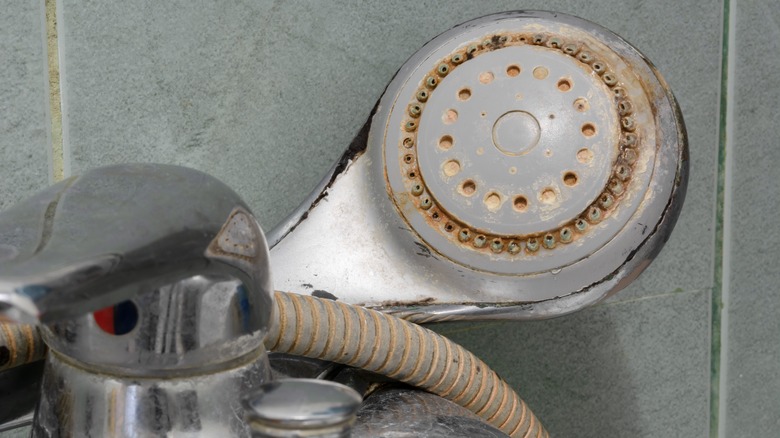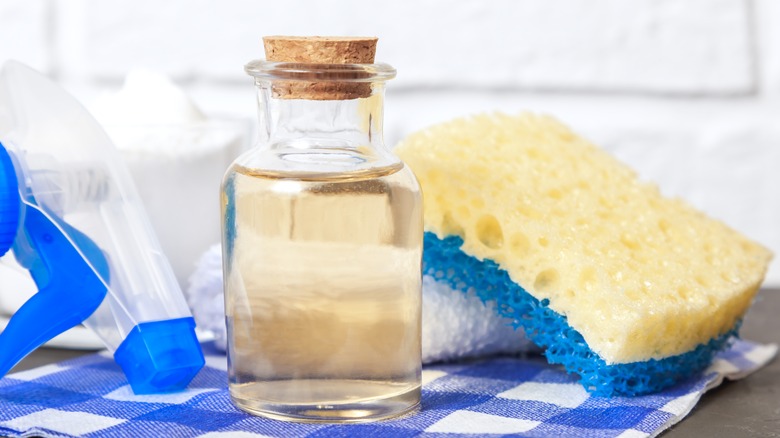Why Cleaning Your Shower Head With Bleach Is A Bad Idea (& What To Use Instead)
Shower heads are breeding grounds for germs, including dangerous bacteria and fungi. Of particular concern is nontuberculous mycobacteria (NTM), a pathogen that can cause pulmonary disease in people with compromised immune systems, according to 2018 research published in the Annals of the American Thoracic Society. In a 2009 study, around one-third of the shower heads tested were contaminated with Mycobacterium avium (a type of NTM), reports the University of Colorado Boulder.
Given these risks, it's crucial to clean your shower head thoroughly, even if that means spending more time on housework. One thing to keep in mind is not to use bleach for this purpose. According to the University of Colorado Boulder, bleach can actually increase bacterial production. A possible example is that some mycobacteria species are resistant to chlorine, one of the ingredients in bleach cleaning products. On a similar note, the authors of a 2018 study published in mBio say mycobacteria tend to be more abundant in shower heads treated with chlorine-based disinfectants.
Bleach can also damage your shower head due to its corrosive and oxidizing properties. Over time, it may cause discoloration, rust, and chipping. The best thing you can do is stop using bleach in your home and look for safer, natural alternatives. Baking soda and other pantry staples are strong enough to remove mineral deposits or even rust.
Ditch the bleach and clean your shower head with vinegar
Acetic acid, the active substance in vinegar, appears to be effective against some mycobacteria species, notes a 2014 study featured in mBio. On top of that, it can dissolve mineral buildup on shower heads and other bathroom fixtures. All you need to do is unscrew your shower head and soak it in a bowl filled with white vinegar for at least 10 minutes. If you have a fixed shower head, wrap a plastic bag filled with vinegar around it. Secure the bag with adhesive tape or rubber bands.
Use a mixture of white vinegar and baking soda for tough limescale buildup. Alternatively, try this household staple that makes removing limescale easier. We're talking about 3% hydrogen peroxide, which can be safely applied to metal surfaces. For even better results, mix it with baking soda — and then apply the paste to your shower head. Wait for about half an hour before scrubbing it down and rinsing it with water.
It's also a good idea to clean the filter screen, as it can harbor bacteria and debris. This part is usually located behind or inside a removable faceplate or nozzle where the shower head connects to the water pipe. Remove it, then clean it with a 50:50 mixture of water and vinegar. Use a soft sponge or toothbrush to scrub off any residue. Rinse the filter screen with water, dry it with a microfiber cloth, and put it back in place.

